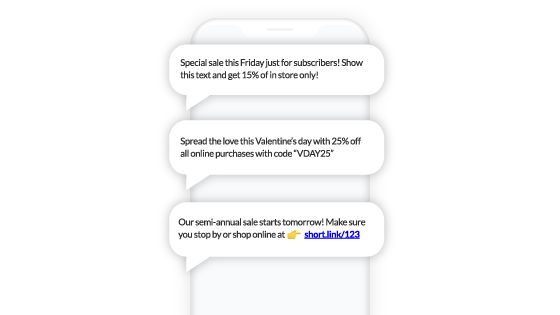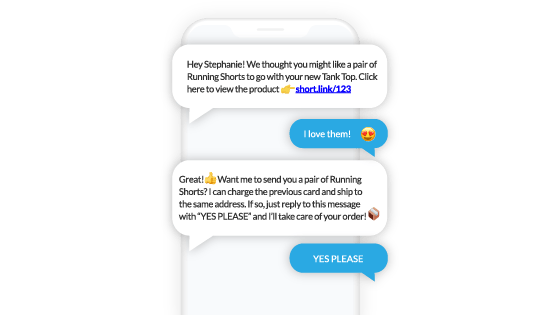Define: Omnichannel
By now, everyone’s heard the buzzword: omnichannel. Every brand knows it needs to adopt an omnichannel strategy, but what does that really mean? According to Hubspot, an omnichannel experience is a multi-channel approach to marketing, selling, and serving customers in a way that creates an integrated and cohesive customer experience no matter how or where a customer reaches out.
Turns out, it’s only the retailers who have figured out how to combine all of their marketing channels into a connected customer journey that have survived quite a few rounds of the so-called “retail apocalypse.” That’s not to say several retailers haven’t tried pouring money into trendy, new tactics without seeing a single uptick in return on investment. So what’s the secret sauce?
Omnichannel vs. Multi-channel
For starters, the customer should always be at the forefront of your omnichannel strategy. For example, you can invest millions of dollars on social media ads, inundate your contact list with emails, and even hire famous influencers. But unless you understand who your customers are and how they like to communicate, your efforts could be a sunk cost.
Most businesses today invest in a multi-channel strategy, where they spend their efforts across multiple channels and use each platform to reach their customers. What they don’t realize is, oftentimes the customer still lacks a seamless experience and consistent messaging across each channel (no matter how creative). In order to launch a successful omnichannel strategy, on the other hand, your brand must account for each platform and device a customer will use and provide an integrated experience across those channels.
To sum it up, just because your business is investing in multiple marketing channels, doesn’t automatically mean you have a strong omnichannel strategy. All omnichannel strategies must be multi-channel, but not all multi-channel strategies are omnichannel.
Text Message Marketing: A Case Study
Text message marketing, or SMS marketing, is one example of a channel that has seen a huge wave of adoption within the past decade. With email open rates dipping to an industry average of only 20%, marketers were desperate to find a more innovative way to reach their consumers. Many retailers soon discovered that with Americans spending 5.4 hours a day on their phones, they could probably reach their customers more effectively through text messaging. They were right. While SMS open rates average 98%, what many brands still haven’t figured out is how to engage their customers beyond the first text message. It’s one thing to be where your customers are, but actually engaging them in two-way conversation is a separate challenge.
Take the experience below, for example. Even with a 98% open rate, are you–as a customer–more likely to respond, click through, and engage with these text messages, or are you more likely to opt out?

The experience above is an example of multi-channel marketing, rather than omnichannel marketing. Why? While the retailer has invested in SMS marketing as an additional communication channel, the brand’s messaging is not integrated, the experience is not seamless, and ultimately, the customer is being talked at rather than listened to. Sure, consumers love to text as a mode of communication; but is it because they solely like receiving messages, or is it because texting is an easy mode of two-way communication? Next, let’s explore the example below.

In this example, the retailer actually sends a customized text message including the customer’s name, previous purchase, personalized product recommendation, and a link to the product in reference. It then captures the customer’s feedback and sentiment from her second response in order to offer a relevant product coupled with a simplified checkout experience–all through the SMS platform!
Not only is this text messaging use case more personalized for the consumer, but it also connects different touch points throughout the customer journey from the initial communication through the checkout process. As an omnichannel brand, it’s important to consider all of your customers’ feedback and behavior as valuable data points that can be actionably leveraged in order to better understand them. As a result, your customers gain relevant messaging through a seamless experience, and in turn, you gain their repeat business.
While several SMS marketing platforms exist in the market today, most are only able to provide that generic, one-way text messaging capability. As we saw earlier, this is an example of a multi-channel strategy that doesn’t necessarily drive your customers to further engage with your brand. After all, what’s the value of a 98% open rate without any subsequent action?
Voxie is the first two-way, personalized conversational SMS platform for businesses. Not only does Voxie use dynamic fields and AI to personalize text messages at scale, but it also stores customer response and behavioral data in order to further segment your contact list. As a result, omnichannel retail brands have seen click-through rates of 30% on average–versus 2.5% for email. Schedule a demo to see how Voxie can power your omnichannel marketing strategy.
Tying it All Together
Now it’s time to take a look at your own omnichannel retail strategy. Is it truly an omnichannel, customer-focused approach, or is it more of a multi-channel strategy? Is your brand messaging relevant and cohesive across all touch points? Are you leveraging customer data today? Regardless of where you’re at, there’s always room for innovation.
We’ve explored several ways to improve the customer experience through just one channel–SMS marketing. But the same principles hold true across all of your other channels, too. Think of omnichannel as a mindset that places your customer at the forefront of your business model. Personalizing each customer’s experience to their unique needs and behaviors is what will ultimately make your brand virtually immune to any “retail apocalypse.” Knowing what you know now, it’s time to adopt the same mindset across all of your new and existing marketing channels. Be creative, and watch your return on investment grow!
